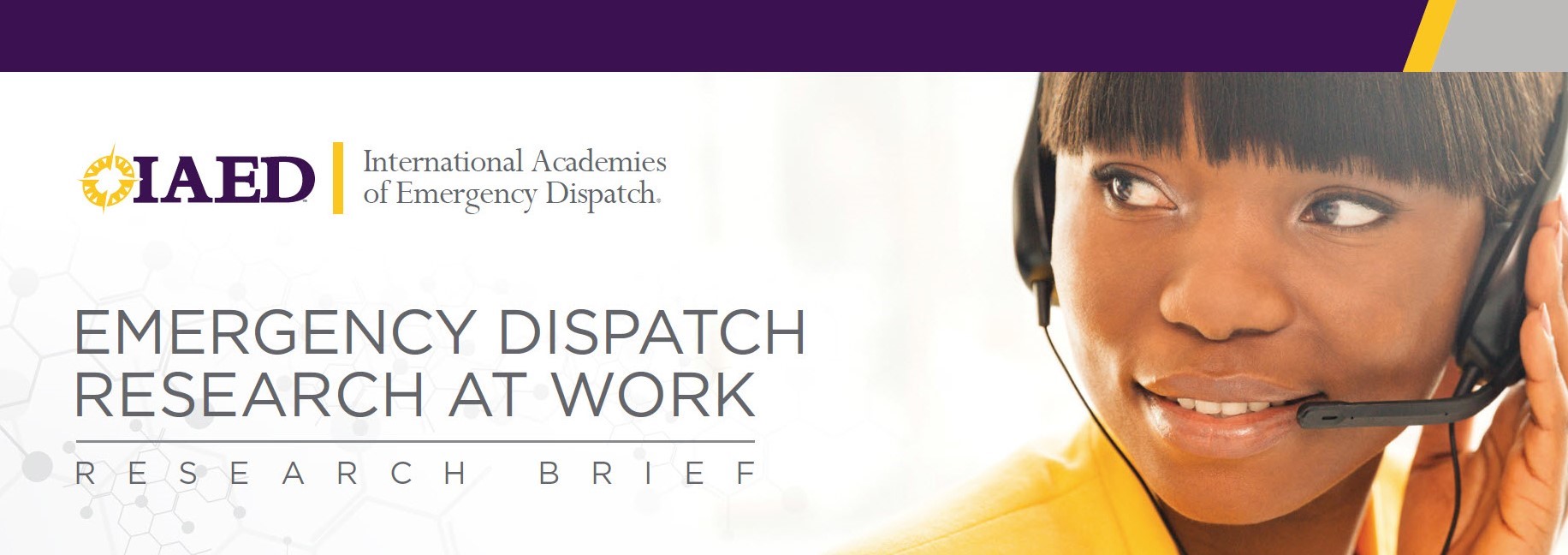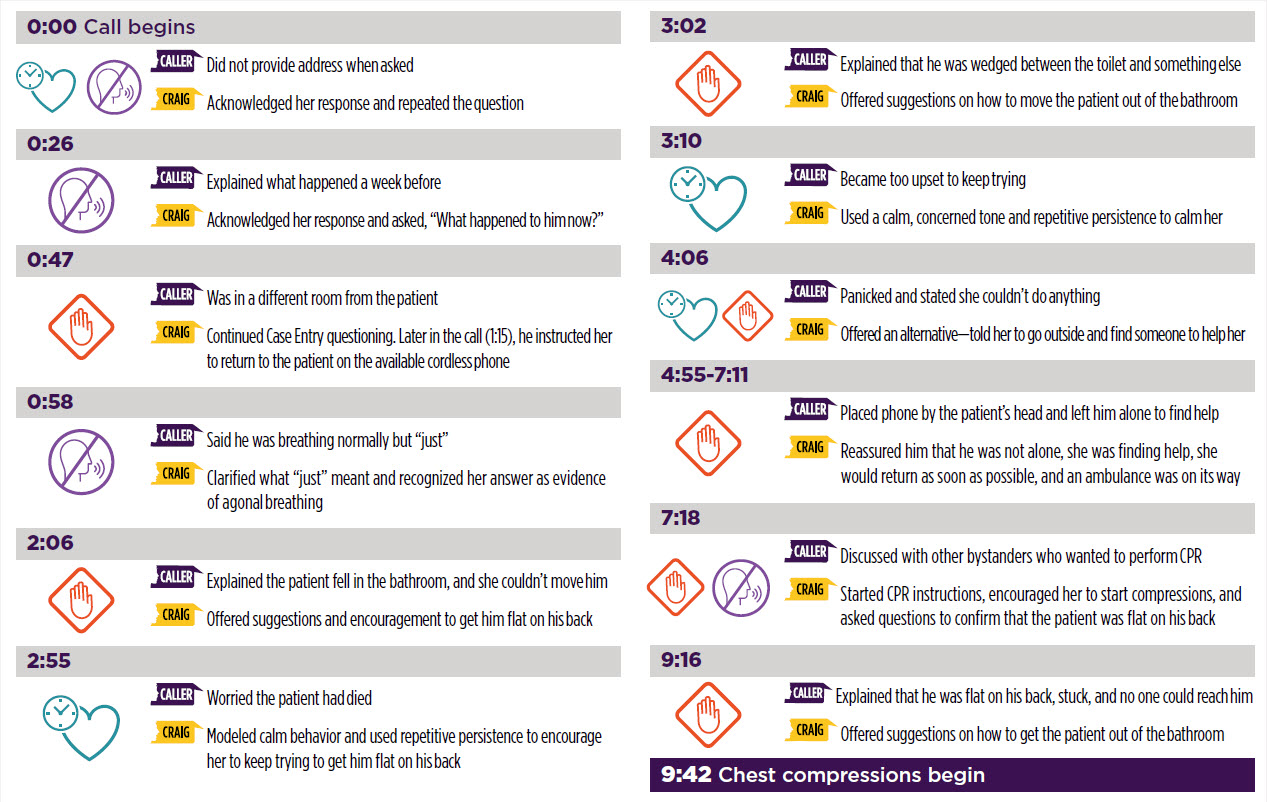
DO CPR CALLS HAVE BARRIERS?
Yes! EMDs can anticipate and manage them.
Cardiopulmonary Resuscitation (CPR) is a lifesaving technique. It involves getting "hands on chest" to perform compressions that manually pump blood and oxygen to vital body organs. Early CPR dramatically increases a patient's chance of survival.
Dispatcher-Directed CPR (DD-CPR) can and does work. It has been a formal part of Emergency Medical Dispatch since the late 1970s. The American Heart Association (AHA) reports that up to 50% of bystander CPR occurs because an emergency medical dispatcher (EMD) provided DD-CPR. While only 1-2% of the calls EMDs receive require CPR, these calls are high priority.
If the scene is safe and the patient requires CPR, the EMD immediately instructs the caller to establish an open airway by laying the patient flat on the ground on their back and removing any pillows. If the patient is not breathing after establishing an open airway, the EMD provides age-appropriate instructions to begin CPR.
Ideally, the AHA recommends, a caller can establish an open airway and begin CPR within 2-3 minutes of making the emergency call.
In reality, barriers delay and sometimes prevent the start of CPR. Studies indicate that over 70% of CPR calls experience barriers. Understanding that most CPR calls will involve barriers means EMDs can prepare for them and work with callers in real time to overcome them.
In reality, a CPR call is a series of predictable events that EMDs can manage. These predictable events are barriers of three types:

Physical: Objects or conditions that delay CPR. The longer it takes to overcome a physical barrier, the more emotional barriers come into play. For example, a caller cannot use their hands because they are holding a baby.

Emotional:Feelings or reactions that delay CPR. Emotional barriers lead to a breakdown in communication. For example, a caller is afraid of hurting the patient and refuses to follow directions.

Communication:Misunderstandings that delay CPR. These misunderstandings can result in additional physical and emotional barriers. For example, the EMD and caller speak different languages or local dialects.
CPR BARRIERS IN ACTION
Anatomy of a CPR Call With Multiple Barriers Craig Sturgess of Welsh Ambulance Services NHS Trust (Wales, U.K.) took this CPR call in 2016, encountering and expertly managing over 40 barriers in 17 minutes. Auditors found this call during a random QA audit and sent it to the IAED™. This call demonstrates a gold standard of providing extraordinary customer service while remaining compliant to the Medical Priority Dispatch System™ (MPDS®) Protocol. Read below to find excerpts of some of the barriers (Physical

) he managed.
Listen to the redacted call and read the transcript on aedrjournal.org.


Craig Sturgess joined the Welsh Ambulance Services NHS Trust in July of 2011 as an Emergency Medical Dispatcher (EMD). After 3 years, he qualified as an EMD-Q® and served as a mentor for newly-hired EMDs.
On his own time, he volunteered as a community first responder and trained as a paramedic. He enjoyed adapting his EMD training and skills to a face-to-face environment.
Tragically, in January 2018, Craig passed away suddenly at home. We appreciate the support and cooperation of Welsh Ambulance Services NHS Trust and his family on this project to honor his gold standard of customer service.
FOR MORE INFORMATION:
- aedrjournal.org/applying-the-american-heart-associations-recommended-hands-on-chest-times-performance-measures
- aedrjournal.org/barriers-significantly-influence-time-to-bystander-compressions-in-out-of-hospital-cardiac-arrest/
TWO OPPORTUNITIES FOR CDE CREDIT:
- Go to learn.emergencydispatch.org
- QUIZ: LOGIN with your Username and Password, click BROWSE COURSES, click RESEARCH, click DO CPR CALLS HAVE BARRIERS?
- TARGET LESSON: LOGIN with your Username and Password, click BROWSE COURSES, click TARGET LESSONS, and click OVERCOMING CPR BARRIERS
Craig Sturgess – Anatomy of a CPR Call with Barriers (Redacted Call)
Craig Sturgess – Anatomy of a CPR Call with Barriers (Redacted Call Transcript)
